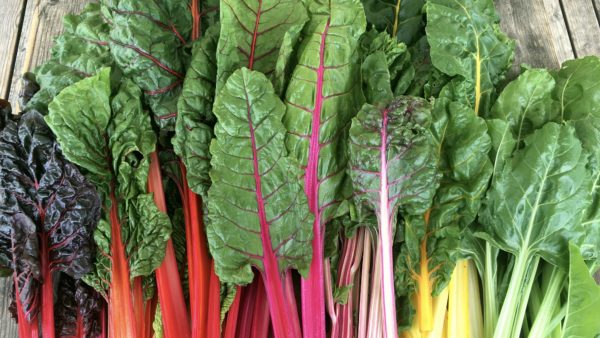
We love to grow it, eat it and create recipes with it!
A bit of history…
The chard plant was first described in 1753. The word “chard” descends from the 14th-century French “carde” meaning artichoke thistle. Chard is a biennial plant and it is part of the beetroot family but unlike the beets, chard is grown for its leaves. Most of its species produce three or more crops. So once the chard season starts it’s unstoppable! Chard includes the green form also known as Swiss chard, as well as red and yellow ribbed forms known as Rainbow chard. You probably wonder whether Switzerland has something to do with the name given to the green variety. The historians are not quite sure. What we know though is that the plant is not native to this country and it’s used in traditional Swiss cuisine in a dish called capuns. You can also try the farm’s vegetarian version of capuns.
Not just a pretty face
Apart of being beautiful and colourful, chard is rich in nutrients. It contains plenty of antioxidants, including high levels of Beta Carotene and vitamin A for healthy eyes and vitamin C to support our immune system.
How to cook Chard
You can treat chard just like spinach and add it to all your favourite dishes. Just separate the stalks from the leaves and cook them first as they will take a bit longer to soften. When wilted or sautéed chard’s bitterness quickly transforms into sweetness. Add a bit of roasted nuts and natural yogurt or your favourite pasta, it’s absolutely delicious! When making soups, stews or curry type dishes, stir fry the chard stalks with the roots and onions and add the leaves later, when the dish is half cooked. As with spinach, chard is perfect for pies or quiches. Our favourite combination for filo pastry stuffing is onion, mushroom and chard.
Combine with Dairy
Dairy goes really well with chard, highlighting it’s distinctly savoury flavour. Cream, creme fraiche, yoghurt, milk, gouda, parmesan, cottage cheese, taleggio and cream cheese all work really well. Try just stirring cream or creme fraiche into wilted chard for a luxurious side dish. Or try our Chard souffle recipe which we highly recommend as it’s adaptable, easy to make but also impressive! Other examples include this Chard and Gruyere tart and our Chard and Taleggio Macaroni Cheese. For all the lasagna lovers our gluten free Chard lasagne with seasonal veg rice is worth trying.
Even Raw?
Depending on the age of the plant, chard’s leaves can be a bit bitter when raw. Nevertheless, this chard pesto is a great way to use this veg raw. It works well even if the leaves are wilted and it keeps for about 10 days in the fridge.
Chard loves…
Cream, yogurt, parmesan, taleggio, nutmeg, paprika, coriander, curry, thyme, black pepper, garlic, soy sauce…
Happy cooking!